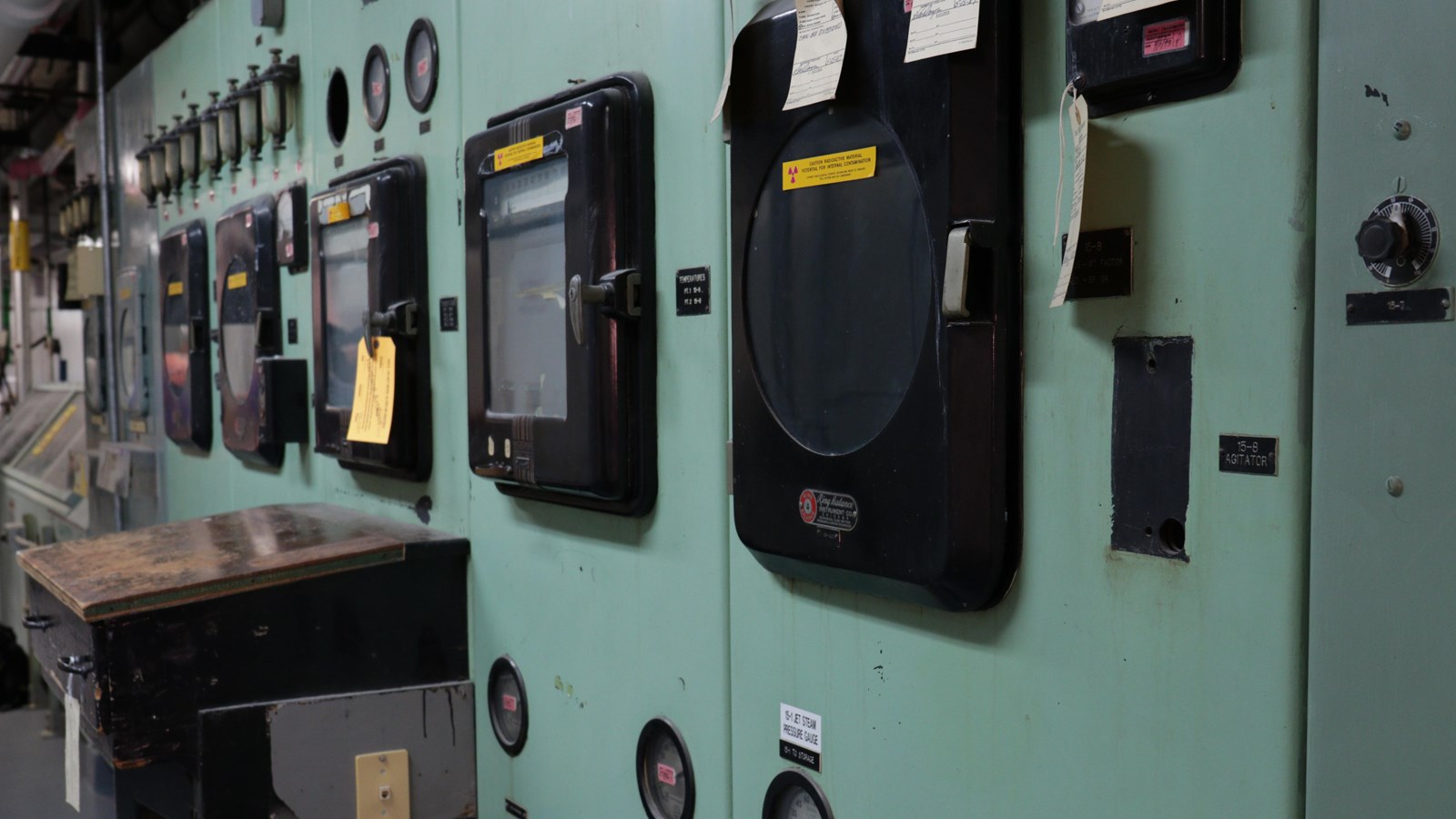Last updated: February 23, 2023
Place
T Plant

NPS
Quick Facts
OPEN TO PUBLIC:
No
MANAGED BY:
| T Plant, Hanford’s first and largest chemical separation plant, began operations on December 26, 1944. The cavernous building, often referred to as “Queen Mary” by Manhattan Project workers, was unlike any other industrial facility previously constructed. Inside this massive structure, workers used remote controls, the world’s first CCTV system, early robotics, and engineered controls including thick concrete walls and leaded glass to protect workers from the tremendous amount of radiation given off by the irradiated uranium fuel slugs. Despite the enormous challenges that such a complicated and novel operation presented, engineers designed and built the T Plant in about a year and a half—less time than it typically takes to build a highway bridge today. T Plant was designed to process about a half-pound (250 grams) of plutonium metal from one ton (907kg) of irradiated uranium each day. That is like separating the weight of a hamster from a mass that weighed as much as an average automobile! The chemical separations process that enabled Manhattan Project personnel to recover miniscule amounts of plutonium from the irradiated uranium were developed by University of California chemist Glenn Seaborg. His original experiments were conducted with minute amounts of plutonium. T Plant’s separations processes used a billion times the amount of chemicals that Seaborg used in the lab. Uranium billets were extruded into fuel slugs and sealed in aluminum jackets in Hanford’s fuel-fabrication area. The fuel slugs were transported to the B Reactor for irradiation. After several weeks to a year in the reactor and a roughly 90-day underwater cooling off period, B Reactor workers used 20-foot (6 meters) long tongs to load the still highly radioactive fuel slugs into water-filled casks on rail cars, which were then moved by train to the T Plant. Inside the T Plant, a series of complicated chemical reactions extracted plutonium from the uranium and other radioactive by-products resulting in a significant amount of chemical and radiological waste that was put into underground storage tanks. Once separated, further processing turned the viscous plutonium into thicker, paste-like plutonium nitrate for safer shipping to Los Alamos, where the plutonium was fabricated into the core of atomic weapons. Plutonium produced at Hanford was used for the world’s first atomic explosion, the Trinity test on July 16, 1945, and in the Fat Man atomic bomb dropped on Nagasaki, Japan, on August 9, 1945. T plant continued operating as a Cold War facility and is still in operation. Its current mission is radioactive sludge storage. Continue Your JourneyT Plant is not open to the public. You may visit the B Reactor on a Department of Energy B Reactor tour. Tours are typically offered spring through fall. The Department of Energy also offers scheduled Pre-War Historic Sites Tour, which show visitors where indigenous people and white settlers lived prior to the Manhattan Project. |
